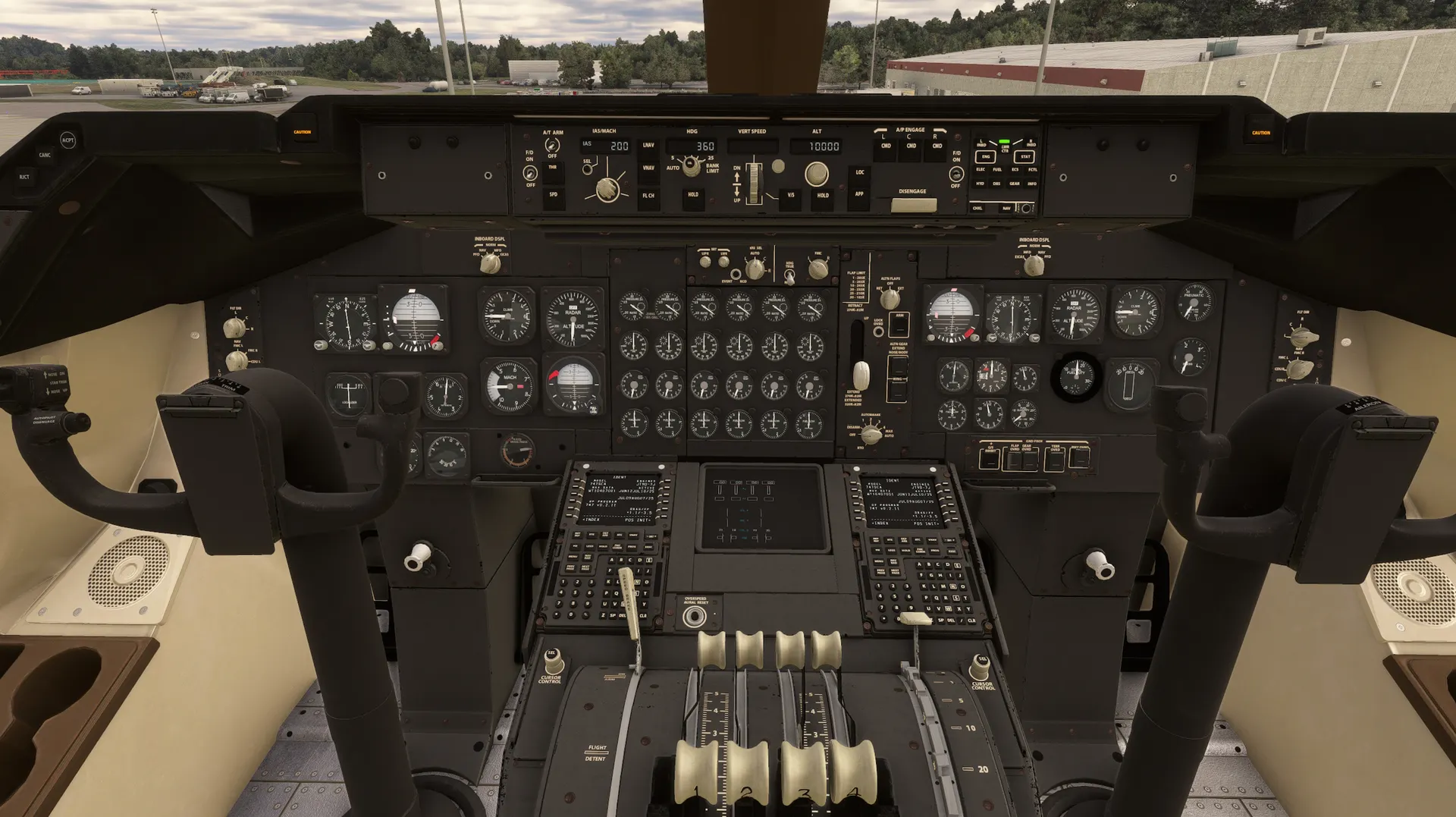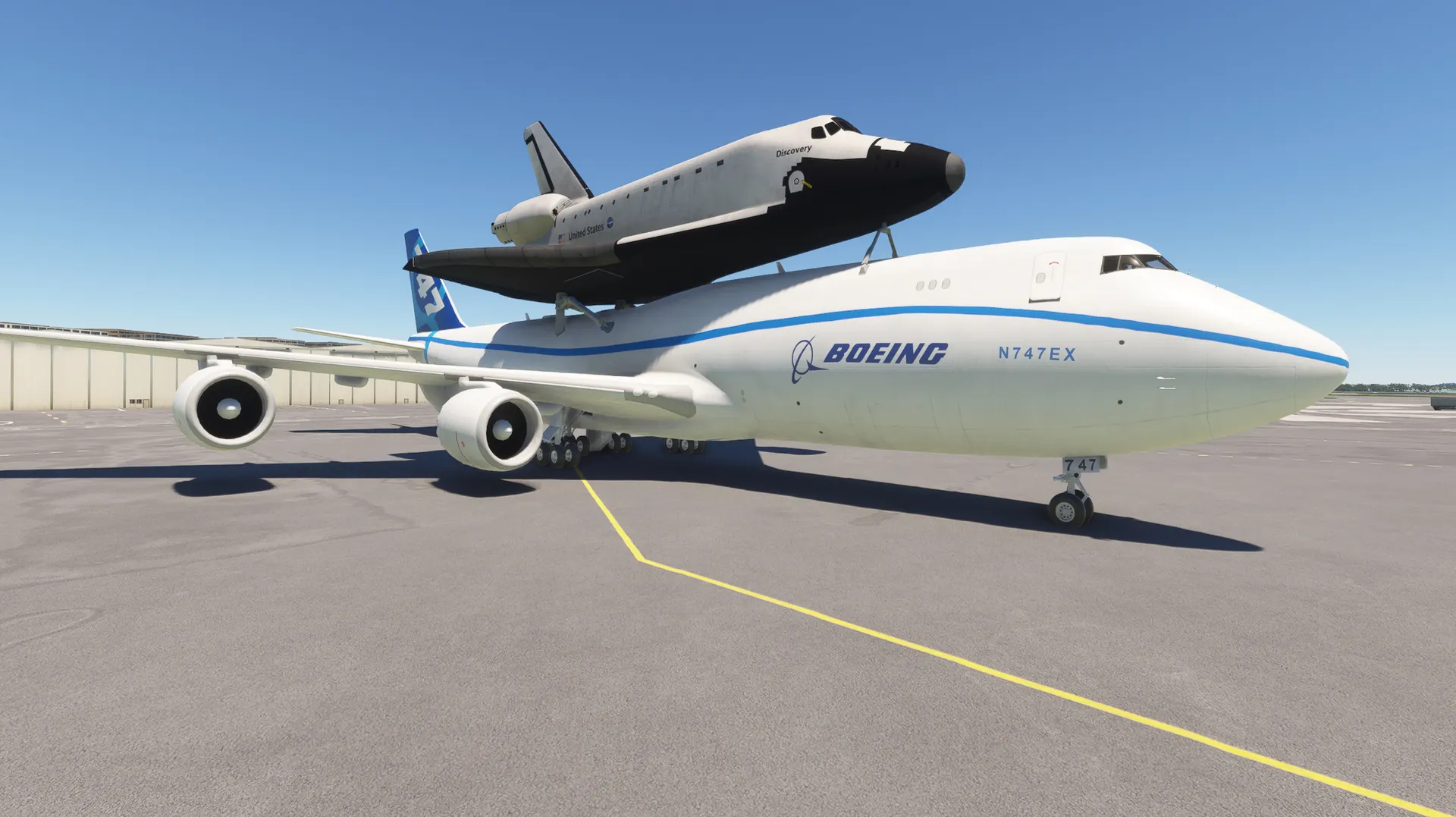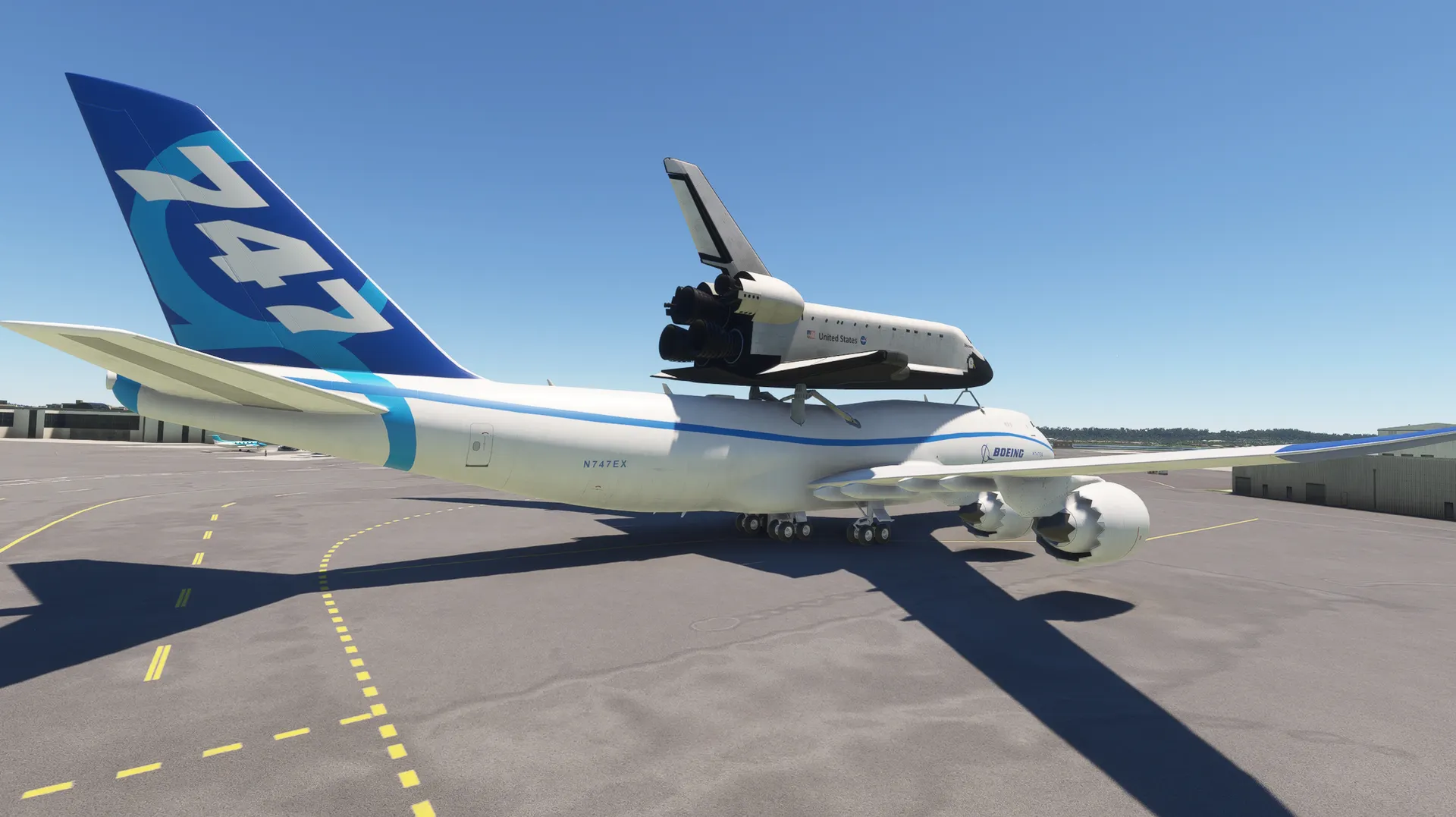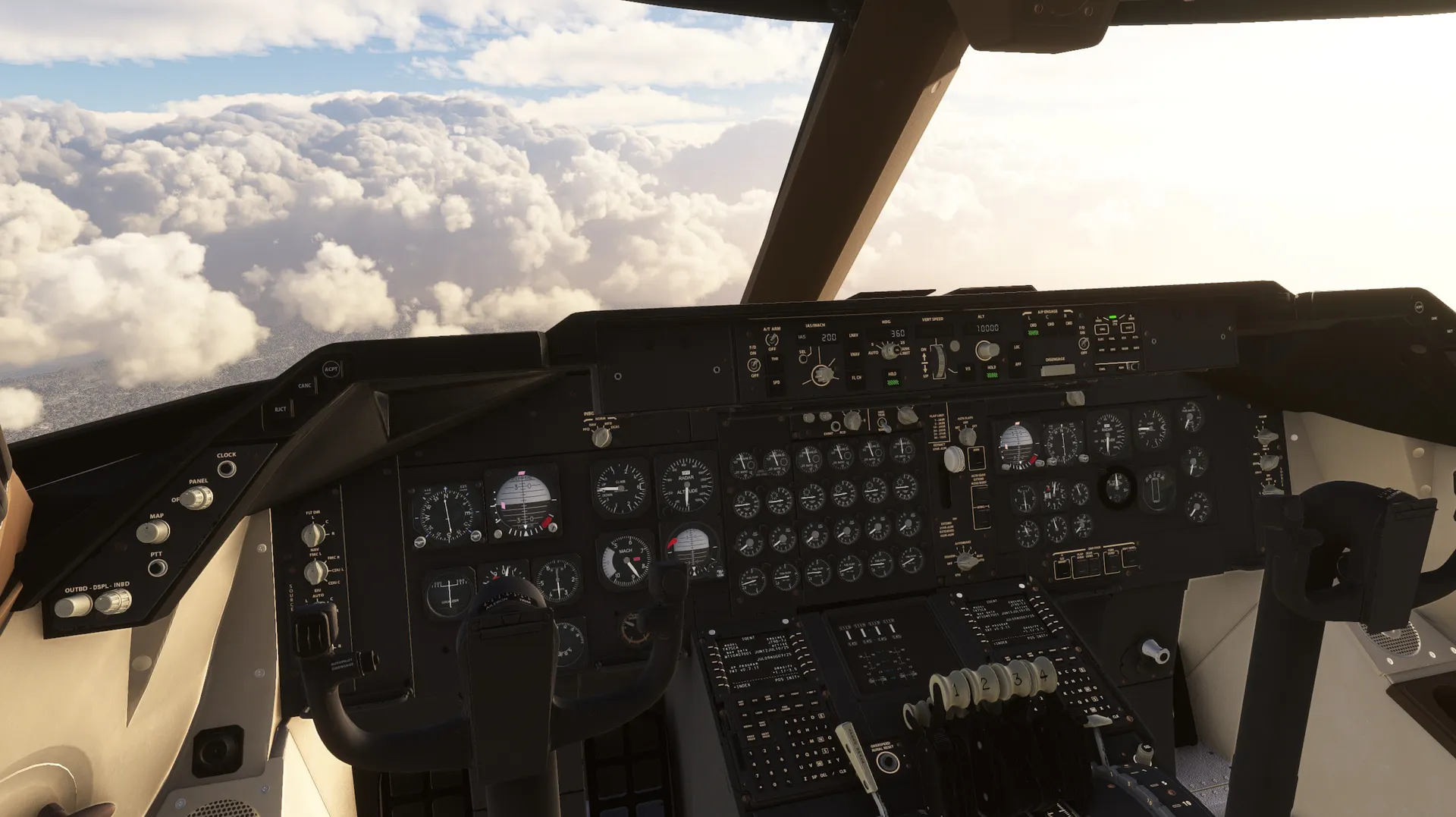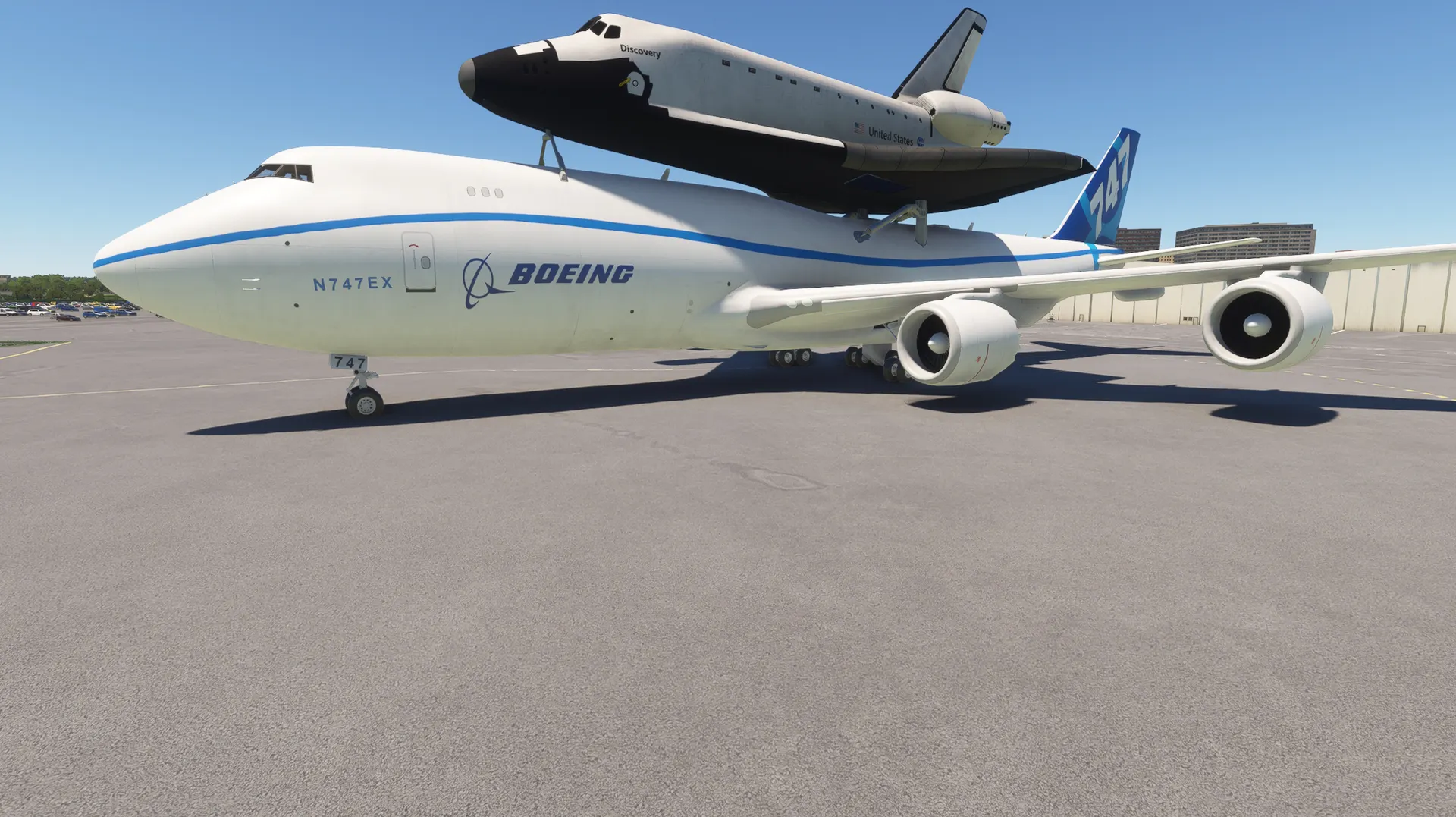The 747 SCA (Shuttle Carrier Aircraft) is a 747 commercial airliner modified to carry NASA’s Space Shuttle orbiters. NASA used the Shuttle Carrier Aircraft primarily to move each orbiter from its respective landing site after a mission to Florida’s Kennedy Space Center launch facility. For transport, each orbiter was attached to the top of a Shuttle Carrier Aircraft’s fuselage with a 3-point mating system. Boeing manufactured the 747 and undertook the modification process to create each SCA variant. Boeing transformed a total of two 747s to Shuttle Carrier Aircraft and the airplanes served NASA from 1977 to 2012.
The base airframe of the SCA, the Boeing 747, is a 4-engine, wide-body, long-range commercial jet aircraft that took its first flight on February 9, 1969 and was commercially introduced on January 22, 1970. It has served as a passenger transport aircraft, a freighter, and several specialty roles. Its proven heavy lift capability and aerodynamic stability made it a prime candidate for NASA during the agency’s selection process for a Shuttle Carrier Aircraft.
NASA built a total of six Space Shuttle orbiters, five operational craft and one for non-space flight testing purposes. Each was launched from Florida’s Kennedy Space Center and returned to one of three landing locations, the primary landing site at Kennedy Space Center, the secondary landing site at California’s Edwards Air Force Base, and the emergency site at New Mexico’s White Sands. If returning to Earth at Kennedy Space Center, the orbiter would be ground towed to its processing facility. Landings at Edwards Air Force Base or White Sands required a ferry flight (only one orbiter landing occurred at White Sands in the history of the Space Shuttle program).
Boeing converted the first Shuttle Carrier Aircraft, named NASA 905, using a Boeing 747-123 (a slight variant of a Boeing 747-100). The aircraft, built in 1970, was flown by American Airlines, which called their early 747s “Astroliners” (they later called them “Luxury Liners”). The conversion included adding three mate-demate hardpoints on the 747’s upper fuselage, strengthening the aircraft’s structure, adding a vertical stabilizer to each end of the aircraft’s horizontal stabilizer, upgrading the engines, adding specialized avionics, and stripping interior fittings. NASA constructed special mounting structures called “Mate-Demate Devices” to fit an orbiter onto the SCA before transport (mating) and to remove it upon arrival at its destination (demating).
NASA 905 took its maiden flight in early 1977 and then conducted its first flight with an orbiter attached to it, Enterprise. Enterprise was the only orbiter that was not designed to travel into space; it was built for aerodynamic trials and other testing purposes. NASA 905 took its maiden flight with Enterprise attached on February 18, 1977. The aircraft conducted five “captive” flights with no crew aboard Enterprise to determine aerodynamic efficacy of the SCA-orbiter system. NASA 905 then conducted five free-flight aerodynamic tests where it launched Enterprise mid-flight as part of the orbiter’s Approach and Landing Test (ALT) program. NASA commissioned the second Shuttle Carrier Aircraft, NASA 911, in 1989. NASA 911 was originally built as a 747-100SR-46 in 1973 for Japan Airlines. Boeing converted the airframe to an SCA and delivered it to NASA on November 20, 1990. Although the original airframes of each SCA differed from each other slightly, the two converted Shuttle Carrier Aircraft were nearly identical in dimensions, appearance, systems, and in performance. In addition to returning orbiters to Kennedy Space Center, the Shuttle Carrier Aircraft performed several other ferry flights.
The Boeing 747 SCA measures 231 feet, 10 inches in length, stands 63 feet, 5 inches tall, and has a wingspan of 195 feet, 8 inches. It is powered by four Pratt & Whitney JT9D-7J high-bypass turbofan engines, each of which generates up to 48,600 pounds of thrust. The aircraft has a range of 1,151 miles with an orbiter attached and 6,329 miles without an orbiter. It cruises at 288 miles per hour with an orbiter attached and Mach .6 without an orbiter.
